Wed, 23 May 2018
Take it away, Alex! Would you like some brain training exercises to keep you sharp and on top of your game all the time? I hope the answer is a resounding, “Yes!” Here’s why: Conditions such as mental illness and aging contribute to mental decay. All the more so if you’re already suffering from mental illness, not to mention the medicinal side effects of psychiatric medicine. These medicines, even when useful, can cause your memory a lot of harm. Here’s the good news: Losing control over your cognitive functions can be hard, but it doesn’t need to happen. There is a way to avoid cognitive decline, and all it involves is training your mind. In this post, you’ll learn everything you need to know about brain training exercises to help keep your memory healthy.
All About Brain Training
Although many people believe that brain training is a modern invention, it actually has a rich history. To take one example, check out the brain training exercises admired by the Edwardians nearly 100 years ago. In fact, mnemonic systems were all the rage in 19th century Great Britain. Famous author Mark Twain even had one called “The Memory Builder”. Then there’s Pelmanism. Like the brain exercise training favored by the Edwardians, Pelmanism is a product of Great Britain, and became very popular during the first half of the 20th century.
Get this: More than 500,000 people reportedly used it, and one of them was the Prime Minister of the country himself! Why was it so popular? First, the system revolutionized brain training because it targeted the same mental functions we focus on optimizing to this day:
The Pelman Scientific Mind Training Program focused on each of these to help people exercise their minds. Participants were mailed monthly booklets with games and exercises designed specifically to stimulate one or more of these functions. All of which goes to show that brain training isn’t new. And of course, Anthony is always coming up with different brain exercises you can explore. Check these out: Even better: We have even more scientific evidence than ever to guide us these days. Modern neuroscience has managed to prove beyond any shred of doubt that our brains are in fact malleable like plastic. In fact, we all have to ability to modify the structure and functions of our brains. Of course, a lot depends on the internal and external factors of our lives, such as other bodily processes or environmental changes. But overall, every single person can intervene and create a better mental life. Sadly, though, cognitive decline is becoming increasingly common past the age of 30. One reason is that people don’t understand the difference between memory loss and forgetfulness. Nevertheless, slowing down the aging of our brain through training is a prospect that fills us with hope. And research shows that it’s completely achievable. However, if having a sharper memory is something you aim for, you need to know right now that it takes work. In order to remain in a constant state of connectedness regardless of whether you’re 30, 50 or 80 years old, you need to push your mind to learn something new each day. There is nothing more stimulating for your synapses than being put at work. In turn, this leads to tangible improvement in more than one aspect. For example, according to Dr. Jee Hyun Kim of the Florey Institute, focus diminishes with age. Due to this deterioration of focus, stimulating your attention regularly can be crucial. By activating the frontal cortex and the hippocampus, you are not working only on this function, but on your memory and thought as well.
How Brain Training Can Increase Focus And AttentionThere are many ways to achieve better focus and attention. One possibility lies in a simple, yet intellectually stimulating mobile app. Similarly, reading new books, especially with a re-reading strategy, or solving math and logic problems puts all the areas of your brain to work and boosts cognition in the process. Then there’s meditation. You can do a walking meditation or sit just to sit Buddha-style for improved memory and concentration. And recent studies that will be discussed shortly suggest that it might even help treat mental illness.
Treating Mental Illness With Brain Training ExercisesLet me give you some context: I have spent the last couple of years researching alternative treatments for mental conditions that affect memory and cognition. Why did I choose this path? Well, three years ago, someone I care about deeply was diagnosed with schizophrenia. I have spent all my days since trying to educate myself on the topic as much as possible. In my journey, I have found that many specialists believe that brain training can help prevent degenerative neural diseases such as dementia or Alzheimer’s. And that’s not all. In fact, such practices can help with instances of mental illness as well. This comes as great news for the vast community of patients struggling with such afflictions. Recent medical science-related endeavors back up this seemingly bold claim. A study conducted at McLean hospital in 2017 has uncovered the potentially beneficial results of brain training in the treatment of mental illness, namely bipolar disorder in particular. The lead scientist was Eve Lewandowski, Ph.D., an assistant professor at Harvard Medical School and developer of McLean’s bipolar disorder and schizophrenia programs. According toLewandowski, BPD affects the memory, processing speed and executive function of most of the patients who suffer from it. This impacts their daily existence and overall quality of life quite negatively. Therefore, working on improving cognitive dysfunctions is crucial for symptom relief in this case. And what better way to achieve that than through brain training? Lewandowski’s research found that the participants who used techniques pertaining to this area exhibited visible betterment that was maintained for at least six months afterward, if not more. She got the idea after noticing how effective this approach was in keeping the symptoms of even more serious conditions such as schizophrenia under wraps. People going through the four stages of schizophrenia have exhibited visible improvement in their symptoms after cognitive therapy. In fact, previous trials conducted under the supervision of professor Barbara Sahakian of the Department of Psychiatry at Cambridge have shown that something as simple as playing brain-stimulating mobile games improves cognition among schizophrenia patients. And it helps in areas where drugs have previously failed, which is even more important to keep in mind. Just imagine how beneficial the effects could be if this would be tried in the long run. Lewandowski and her colleagues support the importance of acknowledging brain training as a viable treatment for mental illness. Modern psychiatry should recognize its merits and integrate it into the roster of available therapies. But until that happens, you can also try doing at home. To tap into the healing properties of this approach, you don’t need to download a mobile app or buy fancy books and puzzles to keep your mind sharp. There are plenty of mental techniques that you can try at home and see how they work out for you. Here are the best three.
The Best Brain Exercise Techniques
1. Memory Palace If you’re looking to train your memory specifically, Anthony Metivier’s approach to the ‘Memory Palace’ technique is one of the best to get the job done. Famous historical and fictional figures alike, such as Hannibal Lecter from the renowned Silence of the Lambs book and film series are perfect examples of how this works. Association is the key to creating your own memory palace to walk around in whenever you need to retrieve certain pieces of information. When these have been assimilated long ago, you need to correlate each of them with a specific part of a location. A good starting point is your own house because it is familiar territory. For best results, draw out the floorplan of your first Memory Palace by hand. Like this:
But before you start drawing, walk around your house first. Then, once your’e done, assign various memories to various rooms. To take it one step further, do the same thing but using objects within the same space. Fill your memory palace with everything you think is worth remembering, but make sure that you build a strong mental route in the process. When the time to remember he information comes, simply retrace your steps along that path. It will take some getting used to, and you will surely fumble at first. Nobody is born an expert, and when you’re dealing with cognition-impairing mental illness, it might be even harder. But practice makes perfect, and it keeps your mind sharp too. Of course, things might not be as simple or straightforward. Sometimes, direct associations simply aren’t possible. This is where your imagination and the ability to create allegories comes in. For example, let’s imagine you want to remember something that has to do with a dandelion, a hose, and a Calico cat. You are standing in your living room and there is a dandelion on the table. You go up the stairs, towards your bedroom. A hose is hanging on the door. You enter, and the most adorable Calico cat is sleeping on your bed, purring. You have now memorized this sequence by simply making associations between its elements and actual, palpable places in your house. 2. Mind Mapping The concept of mind mapping is a slightly similar one, but it is far more schematic and two-dimensional. In fact, it consists of a visual outline that starts with one core concept and then branches out into information that relates to it. Some people prefer to do this on paper because they find it stimulates their assimilation of the notions even better.
And if you’re not a fan of writing it all out, you’ll be happy to find out that it can be used in combination with the Memory Palace technique. The two have a very strong meeting point between them. In fact, you can listen to Phil Chambers discuss using mind maps and Memory Palaces together. [smart_track_player url=”https://traffic.libsyn.com/magneticmemorymethod/How_To_Combine_Mindmapping_And_Memory_Palaces_With_Phil_Chambers.mp3″ social_linkedin=”true” ] Chambers, a world mind mapping expert, mind maps serve even more complex purposes. A mind map follows all the principles of memory, but it also helps you think. But memory palaces are better for actually remembering information, while mind maps are more suitable for processing and understanding it.
The two are sometimes useless when not together. For this reason, finding a middle ground that includes mind maps into your memory palace can be a great way to stay sharp and on top of your game. Furthermore, together they stimulate more essential areas of the brain, thus preventing premature decay. 3. Dominic System The Dominic mnemonic system is one of the most famous brain training techniques in the world. It was designed by famous British mnemonist Dominic O’Brien, who also happens to be an eight-time World Memory champion. Most brain athletes use it nowadays to memorize long strings of digits for competitions. So, why is it so effective?
Just like the Major system associates numbers with sounds, the Dominic system notoriously does a similar thing by assigning them the initials of a person’s name. It’s a highly effective person-action system that can be combined with the memory palace technique, thus creating the Hotel Dominic, as many experts lovingly call it. But O’Brien’s contribution to the world of brain training doesn’t stop here. He also famously established that the strategical recalling of information following a five-step pattern is the best way to cement said information in your brain. This should happen in the following order: • The first review takes place immediately; Thus, in the span of roughly four to five months, you will be able to remember anything. By sticking to this routine, you will be able to fight the cognitive decay that many mental illnesses bring, too. When your schizophrenia or bipolar disorder are playing tricks on your mind, relying on a strict pattern to memorize relevant information can be a true lifesaver.
Final Thoughts
To sum up, it must be noted that medical science is just now starting to look more into the beneficial effects of brain training. Cognitive dysfunction can be caused by many things. These range from something as naturally occurring as old age to more complex issues such as schizophrenia or bipolar disorder. Fortunately, practicing one or more of the three techniques discussed above can be beneficial. It is something that can help you refocus and even excel when it comes to memory and thought patterns. As a short recap, these are: • The Memory Palace. This famous approach is based on making associations between physical locations and various pieces of information. The best way to build the memory palace is by correlating them with specific spots around your home. The familiarity of the territory is prolific for this purpose. • Mind mapping. It consists of a series of diagrams that represent two-dimensional connections between concepts. Creating mental maps works best when used in combination with the memory palace. This activates more areas of the brain than the two would alone, thus preventing decay and enhancing performance. • The Dominic system. Focused on numbers, the Dominic system heavily relies on the connection between these and letters. These usually are the initials of someone’s name. When used together with the memory palace technique, it is known as the Hotel Dominic. As it has been established, the three techniques are equally efficient standalone as they are when combined. In order to choose what suits your needs, you will need to try them. Presentations and explanations can only do so much. Nevertheless, having this knowledge is essential for the future. If you or someone you love, as it happened in my case, are slipping down the slope of mental illness, take action now. Explore the possibilities given by brain training and build a better tomorrow. About Alex Moore Alex is a Psychology undergraduate who strives to discover the intricacies of the minds of the mentally ill, with the ultimate goal of helping them and those around them. When he’s not writing about the efficiency of memory improvement techniques, you’ll find him contributing to www.schizlife.com. The post 3 Effective Brain Training Exercises for Mental Illness Sufferers appeared first on Magnetic Memory Method - How to Memorize With A Memory Palace.
Direct download: 3_Effective_Brain_Training_Exercises_for_Mental_Illness_Sufferers.mp3
Category:Guest Post -- posted at: 1:48am EDT |
Wed, 15 June 2016
Well, if you want to know how to improve focus and concentration so you can finally get those important things in your life done, these ultra-fast tips from Joanna Jast will give you exactly what you need to succeed. Make sure to read the entire post and download the audio she narrated for your convenience. Enjoy this game-changing focus training!
Everything You Need To Know About Focus
Guest post and podcast guest host narration by Joanna Jast. How would you like to skyrocket the effectiveness of your favorite memory techniques? Or, if you’re having trouble getting started, how would you like to develop rock-solid focus that will allow you to learn, memorize and recall anything? Here’s the deal: Without good focus, no matter how much time you spend using mnemonics or walking through Memory Palaces, very little will stick. Why? Because focus is to memory what a key is to a lock. Yes, you can always force-open a lock. But it’s easier and smoother and faster with a key, don’t you think? Most people get this point about focus wrong, but … Here’s Exactly How To Stop Making |
Wed, 1 June 2016
|
Thu, 31 March 2016
Don’t worry. It happens to everyone. Luckily, we can learn from those who have gone before us. In this guest post from Jeffrey Pickett, you’ll learn how to minimize the suffering that comes from rebooting your life and how to get back on your feet in the best possible manner.
Three Reasons Why Starting Over Is So Painful
Starting over can be painful. You’d love to blame others, but after close analysis, you realize it all points back to the person looking at you in the mirror. Our careers, like cars, were meant to go forward most if not all of the time. No one likes to go in reverse. It takes more attention, more focus and more detail. Starting over means you need to back up before you can go forward. Finally, starting over sucks because self-doubts creep in the back door, playing with your mind. The sky is no longer blue, the chirping birds are dead, and someone pulled the chain, diminishing the once bright sunlight. Take heart, my friends, because it just so happens I am the self-proclaimed big deal in the world of starting over. Allow me to prove it to you…
Why You Should Forgive But Don’t Forget
In a previous relationship, well perhaps several, the occasion to try and make things work occurred a few times too many. The bottom eventually fell out and I beat myself up for letting things go on as long as I did. That guy on the street with the “The End is Near” sign was right all along. I just wouldn’t listen. When you make mistakes, learn from the event, forgive yourself and move on. Looking in the rearview mirror only serves to cause pain. Learn the lesson and move forward. Forgive while you’re at it. Holding anger or resentment towards another only sets you up for failure. Let go of the attachment to anger.
Wouldn’t It Be Cool If You Could Be Superman?
I think I’d ditch the cape myself, but having superpowers and flying around would be awesome, right? Well, back in reality-world, that doesn’t work. You can only be yourself. That’s not totally correct. Humans have this unique ability to recognize who they are and change. We can go back to school, join a gym or even seek therapy if necessary. With effort, we can become a better version of ourselves. An important facet to starting over means you have to be willing to change any aspect of your life that no longer works. Ultimately, you can only change yourself; you have no power to change anyone else. That common definition of insanity (dare I repeat it?) is accurate – to avoid more mistakes, change that which is in you versus what you have no control over.
What To Do When The World Turns Upside Down
Whenever your world upside down, forcing you to start over, a vital lesson should be at the forefront of your brain. The way we see things may not be the best perspective. You can’t mold the world to your point of view, but you can shift your perspective. Recently I went hiking with my wife. Just when the trail appeared to dead-end, I’d take one more step, and my perspective changed. The opening was there all along; I just needed a few more steps.
How To Get More Done With Less Effort
I love running. I used to train five to six days a week, running up to 15 miles on some days. But I could never improve my race times. One day, a friend of mine introduced me to running sprints instead of running long distances. I did as he suggested and my race times came down even though I ran shorter training distances. Another example involves my garage that needed some fix-up. A friend offered to help, someone with a lot more experience than I. But my pride got the best of me. I thought I’d do it myself. You can guess what happened. I ripped up most of my work, I cut my thumb open, and my kids learned a new curse word from my repeated frustrations. If only I would have invited the help and pushed away my pride… See the difference? I just needed to change my approach.
I Lied – You CAN Be Superman!
You just have to do one thing before you begin starting over. You have to learn a new skill. Maybe you need a better memorization technique… A potential reason you are in need of starting over is that as hard as it may sound, you may lack the resources to get the job done. Before starting over, research your topic of interest or situation, gain the extra knowledge and get back into the fight.
The Real Reason It’s Better to Give And Not Deceive
The world operates differently these days. You used to be able to ask for favors. But now it’s all about, “What Have You Done For Me Lately?” That’s not all bad. Instead of looking out for good ol’ #1, start over with an effort to provide value. Do things for others. Show the world you want to add versus subtract. Don’t provide something with the apparent reason you just want something in return. Give with the intention of helping. If you’re lucky (and genuine), then the gifts will come back. Give your work away. Giving is good for the soul. It’s good for your health, too. Speaking of giving, I have a self-titled website where I give as much of my experiences as I can write down. I’m focusing on health these days, so if you’d like to improve your health and lose some weight in the process, check out my free guide. Well, now you know of my experiences in starting over. I’d love to hear yours. I’ll bet they are the type of stories Jimmy Fallon/Kimmel would feature! Share what happened and what you did to get over it and I’ll see you in the comments. Further Reading How To Live An Interesting Life The post Insights to Remember Before Starting Over appeared first on Magnetic Memory Method - How to Memorize With A Memory Palace.
Direct download: Insights_to_Remember_Before_Starting_Over_From_Scratch.mp3
Category:Guest Post -- posted at: 6:36am EDT |
Wed, 11 November 2015
Check out this guest post by Camilla Hallstrom of 99 Smart Ideas. She teaches you how to use powerful psychological tools to make finally crossing that language off your bucket list simple and fun. Take it away, Camilla! Have you ever started learning a language only to find yourself still no better than a beginner years later? If so, you’re certainly not alone. Learning a language is often considered extremely daunting and takes a long time. After all, you’ll have to cram all this information into your brain. For example, you’ll have to memorize new vocabulary, including regional variations, slang, cultural concepts, grammar rules, and numbers. If you’re not some sort of a memory prodigy, you’re in it for the long term – and who has time and energy for that? But here’s the thing: The conventional wisdom that learning a language is a long and arduous path is…
Just Plain Silly
As a native speaker of two languages, Swedish and Finnish, and fluent speaker of three more languages, English, French, and German, I can communicate in two other languages, Norwegian and Danish, and I’m a beginner in an eighth language, Italian. Am I a language prodigy? No way. Do I have superhuman memory skills? Not really. Is it in my genes? Nope. No one in my family speaks as many languages with the same fluency. The key to every language that I’ve learned is that I have learned how to motivate myself to keep on learning and memorizing. Being motivated to learn a language might sound intuitive, but still, this is one of the most basic things language learners struggle with. Motivation also applies to learning in general and learning memorization methods that can be applied to other things. For example, you know from Anthony’s Magnetic Memory Method that there are structured frameworks that can be applied to language memorization. And if you’ve used the Magnetic Memory Method, you know it works. Yet, it’s easy to fall back on the same old excuses – you don’t have time to create those Memory Palaces right now, you don’t have time to learn the techniques, etcetera. So how do you continue to motivate yourself to keep on learning? How do you master those Memory Palaces and learn a new language? Read on to learn exactly how you do this – once you’ve mastered motivation, there are no limitations to your learning. (Note: I’ve put together an eBook at the end of this post that will give you 19 actionable ways get motivated and achieve your goal.)
What Does Motivation Do to Your Memory?
Years ago, back in high school, I wasn’t very diligent. German was one of my least favorite subjects. Yet, I had to undertake a rigorous and important exam at the end of my senior year. Everything that I had ever learned in my German classes throughout school was going to be tested. I didn’t have very much time to revise. Also, I had to take three other exams at the same time. I pretty much gave up at the starting line. Instead of trying to frenetically revise grammar books and dictionaries a month before my test, I decided to do something unconventional. Quite simply, I watched my favorite movies, read my favorite books, and watched the news – all in German. I did this for a month and I enjoyed doing it. At the end of that month, the result for my exam took me by surprise – I scored nationally in the top 20% and was one of the best in my class. This success happened despite the fact that I had been one of the poorest performing students just a few months earlier. How come?
Don’t Overlook This Little Known Secret: |
Wed, 21 October 2015
Take it away, Nelson! So you’ve read a bunch of books on memory skills. You may have even listened to all the podcasts on this site. But although many of them have helped your memory tremendously, there might be some of you out there who want to use your techniques to compete in (and possibly win) the USA Memory Championship. As a 4x USA memory champ (and before you think I’m cocky, also a 3x USA Memory Championship loser), I know the ins and out to winning this competition. Surprisingly, becoming a memory champion is not necessarily all about memory. There are a lot of other subtle things that go into making it to the end and winning the USA Memory Championship. And I’m going to explain to you exactly how. Here we go. Step 1 – Sign Up
This first point is dumb and obvious, but I’ve met a lot of people who talk about the competition as if it’s this Holy Grail that awaits them … … once they are truly prepared. To them I say, f*ck it. Just sign up and compete. There is nothing better than getting the experience of a full competition under your belt than actually competing. I hate to say this but, no one (well except for the very first winner, Tatiana Cooley) has won this thing on the first try. You could argue that Joshua Foer won on his first go, but technically he was there the year before as a journalist. Sure, he didn’t compete that first time, but he dug himself deep into the competition for his article. Scott Hagwood, Ram Kolli, Ron White, Chester Santos and myself, we all lost before we won. Even this year when I took first place, I honestly believe I won based on competition experience. There were some competitors with better-trained memories than me, but less competition knowledge and experience. So, bottom line, it’s about getting competitive experience. If you want that edge, just sign up and compete. It’s worth gold. Go for it!
Step 2 – Make It To The Second Round
The USAMC is split into two parts. The morning events: * Names & Faces The afternoon playoff events: * Spoken Words Making it to this afternoon second round has a lot of parts, because you need to score well in each event to make it into the advancing top 8. Not as well as you might think, but decent enough. The scoring works like this: With each discipline you get a score based on how much you memorize correctly according to the rules. Then, that score is turned into a championship score, which is a weighted score based on a curve. The best score is 100 pts and then everyone scores comparatively. Statistically over the years, you need about 200-250 out of 400 pts to make the cut. But standards change over time and it is harder to get a score that high than ever before. But the nice thing is that even if there are a couple people hitting some awesome scores, there are a lot of people with mediocre scores. Until everyone in the USA is amazing at memorizing (which they’re not … yet), this fact will be your savior. The mediocre scores are there because it often ends up that there are one or two, at most three front runners who are in another league compared to everyone else in the top 8. The rest are good, and still better than the remainder, but not that impressive comparatively to the top. So the bottom line is that you need to score consistently mediocre (or better) across the board to make the top 8. You used to be able to pass to the second round by being amazing at just 2 of the events. But agian, that’s getting harder to do. And if you are great at only one event but none of the others, you’re chances are nearly zilch. In other words, sorry to say, but there is no real shortcut here. You gotta be “good” at all four disciplines: names, numbers, cards, and poetry. But the good news is, you don’t have to be that good.
Step 3 – Play Strategically Through The Playoff Rounds
Okay, you’ve made into the top-8. Maybe not top ranked, but you’re in there. The nice thing about the afternoon playoffs is that it is all strategy. The chances for anyone to win at this point are all pretty much even. You could be the worst of the 8 (i.e. Ram Kolli in 2013) and still end up beating 1st place (me) and become the champ. SPOKEN WORDS One slip-up and … … you’re out. The round ends when three people have made a mistake. To me, this is the most difficult and nerve-wracking event. What you want to be able to do is memorize just enough not to run out of words before those three competitors get eliminated. This means that the real trick is in figuring out how many words to memorize. It makes for a delicate balance between what you are capable of and what you think others can achieve.
Mind Explosion!
There have been years that the word count went up to 88, and others where it only went up to 35. Everything depends on circumstance. People trip up on the most unpredictable things. For example, favorite Johnny Briones recited “architecture” instead of “architect” in 2014. Top 5 finalist, Brad Zupp swapped the very two first words “aorta” and “office” in 2012. And many others have just blanked when they new up to 100 or so words. You just don’t know who’s going to trip up, so make sure you know YOUR words. Typically I go for what I think is a safe minimum, around 100 words. Make sure you can do those 100 words, and do them perfectly. What’s tricky in recall is that you aren’t by yourself reciting. You have to be mentally prepared to say every 7th word or even less if someone gets knocked out before you. This can be a bit tricky and throw you off if you haven’t practiced. TEA PARTY My advice: Don’t bother listening to the people. Just listen for the name, memorize it, then put your head down, ignore them, and just study the sheet (the same information they speak is given to you in print). They talk way too fast to memorize it on the fly, so just read it instead. Plus, you get an extra 7-9 minutes to review the packet info after the audience members are done speaking. On top of that, you get three strikes (not single elimination like SPOKEN WORDS). I find this event the easiest because it’s so lenient. Typically it goes until two people are eliminated, but in recent years, no one has made three mistakes, so all five competitors qualify for the next round. Look for them to add a few more bits of info next year to make it harder. DOUBLE DECK So now you’ve made it to the finals! All you have to do is memorize two decks of cards in five minutes. At this point, it’s most likely there are three competitors left (but it could be up to five). The goal is to memorize more than your opponents. There was a time when memorizing around a deck and a half was championship winning, but not anymore. Last year four out of the five finalists memorized (or claimed to) both decks in their entirety. So then it comes down to accuracy. How reliably can you recite those two decks perfectly? You won’t have to say all the cards, since you’ll be alternating between competitors, but as with the words, you need to be flexible and say any card when it comes to you. A few competitors have failed to do this over the years (me included) despite being clear favorites to win the title. It’s tricky, but can be overcome with practice.
Step 4 – Fly Under The Radar
Here’s an “inner game” tip to take with you for the whole competition: Don’t talk hype. Just show up to the competition and kick some quiet ass. For one, you’ll be no one’s focus. You can freely chill out in the back of the room hitting the scores that you practiced with zero attention coming your way. But if people know about you or you’ve been around a few competitions and done well, you’ll get more attention. More attention means more stress and possibly more cameras in your face. What I wouldn’t give to do my 2010 competition again. No one knew me, and I came out of the gates shocking everyone, quietly and confidently. The top guys didn’t know anything about me, and it made them nervous while I was in there just cruising. Obviously there is still a lot of work you’ll have to do if you want to do well in all the events. But there is an endless amount of literature on just how to train your memory for competition. You can start at Art of Memory where you’ll find loads of resources created by other memory competitors. Put all those things together and with enough luck and skill, you might just find yourself standing up on stage as the 2016 USA Memory Champ.
BOOM!
Further Resources Extreme Memory Improvement interview with Nelson Dellis Nelson’s Kickstarter campaign for a children’s picture book called I Forgot Something (But I Can’t Remember What It Was) Help a good cause by taking the Extreme Memory Challenge and support Alzheimer’s research How To Help Middle School Students Remember More The post How To Win The USA Memory Championship appeared first on Magnetic Memory Method - How to Memorize With A Memory Palace.
Direct download: How_To_Win_The_USA_Memory_Championship.mp3
Category:Guest Post -- posted at: 12:39am EDT |
Sun, 21 June 2015
|
Sun, 10 August 2014
Richard Gilzean, long time friend of the Magnetic Memory Method and the man behind the delightful blog peeleye, recently shared with me some great writing he has done to chronicle his adventures in using memory techniques and related skills like juggling. How are memory techniques and juggling related? Read on to find out. And a Magnetic thanks to Richard for not only sending this to me and allowing me to post it on the site. I’m proud to make it the first Magnetic Memory Method Guest Post ever and know that you’re going to love reading these reports from a memorizer making great strides with the techniques. Richard is an inspiration to us all. Hanging Out With My Magnetic Memory By Richard Gilzean 28 July 2014: Where to start with this recollection on what I have learnt about myself over the past 12 months? The idea came to me this morning on the train as I was commuting in to work. While passing over the Sydney Harbour Bridge and looking out over the harbour, I was listening to the podcast interview between Anthony and Kerstin Hammes. Just after Anthony had explained what a “John Henry” was to Kerstin, she suggested that language learners can benefit from keeping a journal of their efforts in order to better see and appreciate where they have come from in their respective journeys. What a cool idea, I thought. I’ve been on my own personal development journey for almost a year and it is as good a milestone as any to take stock and recount what has happened. (Although in reality it is a process I have been undertaking with varying degrees of application for many years). In my case a whole bunch of factors came into play, not one particular flash of inspiration. I had wanted to get back into studying German language, but in a way that was different from my past efforts of going to classes, studying stacks of flash cards and reopening the German text books which had taken over a shelf in my study. There had to be another way. It was around this time that I came across Anthony’s book How to Learn and Memorize German Vocabulary: … Using a Memory Palace Specifically Designed for the German Language (and adaptable to many other languages too) on Amazon. 29 July 2014 In embarking on this quest for self-improvement, mastery, getting-my-act-together, call it what you will, I found myself quickly inundated with information and opportunities to explore this open-ended field of inquiry. I browsed the websites and purchased a bunch of e-books on memory improvement / training. Last October I watched the television documentary series Redesign my Brain on the ABC (Australian Broadcasting Corporation). From within the topics explored, including visualization, mnemonics, magic and memory training, I became interested in the art of juggling. After a few weeks of tossing and catching and dropping I became a reasonable 3 ball juggler. But more importantly I was reminded of the values of concentration, regular practice, focus, relaxation and keeping it simple. More recently, in one of his newsletters, Anthony disparaged that hoary notion “If something is worth doing it is worth doing well”; rightly noting that it is a load of old cobblers. Juggling tells me that something worth doing is invariably preceded by failure and persistence. Embrace failure people, because failure gets you closer to what you’re good at. 30 July 2014 Slow Hand. Did I want to memorize a couple of packs of playing cards in under two minutes like those described in Joshua Foer’s Moonwalking with Einstein? Not really. But I did like the idea of impressing family and friends by being able to shuffle a pack of cards and casually rattle them off one by one. So I followed the tried and true mnemonic system of associating each card in a deck to an image, rehearsed it a couple of times and now I have all 52 cards locked in – plus the joker for good measure. I’m still pretty slow at it after almost a year and so I still need to keep up the rehearsal – keeping my hand in, so to speak. I find using a deck of cards a great way to remember places that I have visited and spent some time in and which I want to use as Memory Palaces. The other day I went to the local Austrian Club – Community Cultural centre for a birthday lunch with a bunch of friends and their kids. While tucking into my Schnitzel and Weissbier and with an acoustic backdrop of yodeling music on a stereo loop, I made a mental note of the large hall which included a “Herzlich Willkommen” reception, Stammtisch, dance floor with band stage, drinks bar, maps and flags of the Austrian regions, air rifle trophies, several mounted animal heads and a painting of people sitting at a table that looked like it had been knocked out by one of the locals after one too many ales. With my pack of cards I have spent an enjoyable half hour recreating such Memory Palaces, as well as holiday houses, places from my childhood, museums, cafes and the local art gallery. 31 July 2014 Geography, poetry and the in-laws. One of main goals for wanting to improve my memory has been to increase my overall ability to communicate in German. One of the first exercises I undertook after reading Anthony’s book on how to memorise German was to memorise the 16 Bundesländer together with the names of each capital city. I chose the house of my partner’s long deceased Tante Annie in Munich. I never met Annie, but I did get to spend a couple of excellent summer holidays there a few years back. Her house has also become my Memory Palace for all of my German vocab words starting with the letter ‘a’. Even though Annie’s old house has now been knocked down and replaced with a bunch of townhouses, I will always have a strong imprint of all the rooms and apple trees in her house and garden. I have also memorized poems both in English and German. Not a huge repertoire to date, it includes Shelley’s Ozymandias, the German children’s poem Der bitterböse Friederich from the Struwwelpeter book of poems and Heinrich Heine’s Die Lorelei – about a guy in boat with an unhealthy obsession for a girl. Armed with this new knowledge, I have tested my partner’s knowledge of the German states (she didn’t pass) and entertained my mother-in-law with a recital of Die Lorelei (she was very impressed with her son-in-law). 1 August 2014 The Memory Wars. 6am. I slide out of bed, shuffle downstairs and crack open the smart phone. There, in my inbox, sits my Magnetic Memory Newsletter; as regular as the ravens, kookaburras and lorikeets making a racket outside my window. This morning’s post is not Anthony’s usual considered replies to someone’s magnetic memory question, but a spirited defence of the daily newsletter against the detractors and critics who have ‘issues’ with his approach. Personally I don’t have a problem with the format of the newsletter. On some mornings I will quickly scan the text, satisfy myself that I’m across the main point and hit delete. But usually the points raised are of interest and I’ll read a bit more closely and save the post for future reference. I recently read an article which argues that we live in an age of warring internet tribes. Whether it’s climate change, immigration, religious belief or the kind of pet you have, people are going to have entrenched positions and whose opinions cannot be changed. I guess memory training and approaches to learning are not immune to blog wars and forum stalking. It’s not just that we differ, but our sense of self is developed in our disagreements. Conflict is inevitable, but disagreement can still be productive. Which, in my mind at least, is what I took away from this morning’s post. Personally I’ll stick with Anthony’s daily newsletter. His commitment to the cause confirms for me that he practices what he preaches. 2 August 2014 By now I have come up with more that enough memory palaces to serve as staging posts for all the things I want to be able to remember and use. I’ve already mentioned Tante Annie’s house, but there is also the house I live in here in Sydney, my parent’s apartment block, my son’s local scout hall, the swimming pool, the places of my youth and journeys around my neighbourhood. Cafes are handy, as are cinemas and my daily commute from home to office. They are all listed on a spreadsheet and some are used more than others. I have a very large cork board sitting over my office desk (measures about 1m x 1.5m) and around the edge I have pinned a collection of business cards, postcards and photos, 35 in total.
5 August 2014 Flash celebrities over at the school. Another website that I subscribe to is German Flashcards run by Antosch-and-Lin.com. The site turns out a daily newsletter containing a word and phrase of the day and is designed for the spaced-repetition brigade. I wrote a blogpost for their site a few months ago about my experiences and struggles with learning foreign languages over the past 24 years. You’re welcome to have a look at Wrestling the Bear, Part 1 of what plan to be a three part series. Armed with the daily phrases that I consider to be useful and which add to my vocabulary, I have compiled a hefty list. But how best to memorize them? My solution has been to create an A-Z spreadsheet of famous names and people I know and assign a phrase to each of them. (I’m not sure where AM – Anthony Metivier fits in – famous or people I know – but you’re in the mix). Each name / phrase is then placed on a route that runs from my front door and heads out towards my son’s local public school, a Memory Palace I am very familiar with. So far I have gone from Andre Agassi to Conchita Wurst. With the exception of Q – X – Y (too hard), I have most of the spreadsheet filled with names. However, if someone can suggest a name with initials IO I’d be grateful. 6 August 2014 Meet Bob the Builder Roman Soldier. Of all the positive benefits I have achieved over the past couple of months, without doubt the most personally rewarding has been being able to impart my learnings onto my nine-year-old son. Math is not one of his strengths, and my wife and I have invested a lot of time and energy in helping him to stay on top of the topics covered in the class. Towards this end, and in part inspired by Anthony’s interview with the young girl who memorized all of Shakespeare’s play and sonnets, I have had some wins in using the Magnetic Memory Method to help with times tables, shapes and volumes. My son is now getting the hang of creating his own memorable characters, including Bob the Roman soldier, who walks through his mapped-out classroom and nominating stations for the Roman numerals I V X L C D & M and figuring out how the sequence of Roman numerals operates.
I wish I had been shown how to use my mind to memorize all the stuff that they threw at me during my school years. I wish I had been show how to study properly, period. I am determined to make sure that my child will be able to realize his potential and dreams without the stress and pressure that hangs over the education system like a heavy cloud. So I lend my wholehearted support towards the idea that mnemonics – and the Magnetic Memory Method in particular – have a worthwhile and important place in the education toolbox, regardless of whether you are 9 or 59 years old. So that just about sums up what I have achieved in a relatively short period of time. My German vocab excel spreadsheet continues to grow and I still find the whole process mostly fun, even on those days when it seems like some word is not sticking despite repeated attempts to recall. Just remember that it is not a race and to relax. As for the future, well I have a desire to memorize all sorts of things including music, Japanese, Italian, chess patterns and especially my command of my mother tongue.
About the author: Richard has a background in fiction writing, ESL teaching and mnemonics. He has a love of all things German, believes that more men should wear proper hats, and would never be want to be called a ‘polyglot’ because it sounds like a pathological condition. Check out his post on memorizing German phrases for an updated tutorial on his progress with learning, memorizing and recalling German en masse. The post Hanging Out With My Magnetic Memory appeared first on Magnetic Memory Method - How to Memorize With A Memory Palace.
Direct download: Hanging_Out_With_My_Magnetic_Memory_By_Special_Guest_Podcaster_Richard_Gilzean_Magnetic_Memory_Method_Podcast.mp3
Category:Guest Post -- posted at: 7:52am EDT |
The Magnetic Memory Method Podcast (Guest Post)

Categories
generalMemory Improvement Tools
Memory Method Tips
Brain Exercises for Memory Improvement
Memory Improvement Case Studies
Podcast
Guest Post
Memory Palace Tactics
Practical Memory Techniques
Uncategorized
Improve Memory Q&A
Archives
AprilMarch
February
January
December
November
October
September
August
July
June
May
April
March
February
January
December
November
October
September
August
July
June
May
April
March
February
January
December
November
October
September
August
July
June
May
April
March
February
January
December
November
October
September
August
July
June
May
April
March
February
January
December
November
October
September
August
June
May
April
March
February
January
December
November
October
September
August
July
June
May
April
March
February
January
December
November
October
September
August
July
June
May
April
March
February
January
December
November
October
September
August
July
June
May
April
March
February
January
December
November
October
September
August
July
June
May
April
March
February
January
December
November
October
September
August
July
June
May
April
March
February
January
December
November
September
| S | M | T | W | T | F | S |
|---|---|---|---|---|---|---|
| 1 | 2 | 3 | 4 | 5 | 6 | |
| 7 | 8 | 9 | 10 | 11 | 12 | 13 |
| 14 | 15 | 16 | 17 | 18 | 19 | 20 |
| 21 | 22 | 23 | 24 | 25 | 26 | 27 |
| 28 | 29 | 30 | ||||
Syndication

 This guest post on effective brain training exercises for mental illness sufferers comes from Alex Moore.
This guest post on effective brain training exercises for mental illness sufferers comes from Alex Moore. 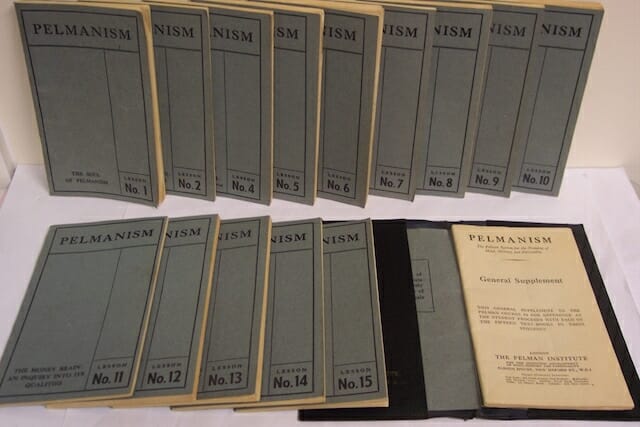
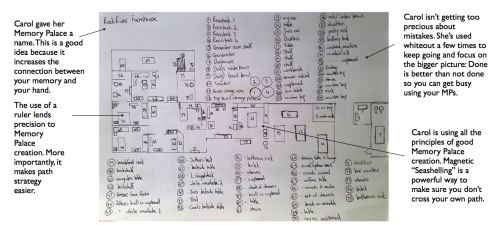
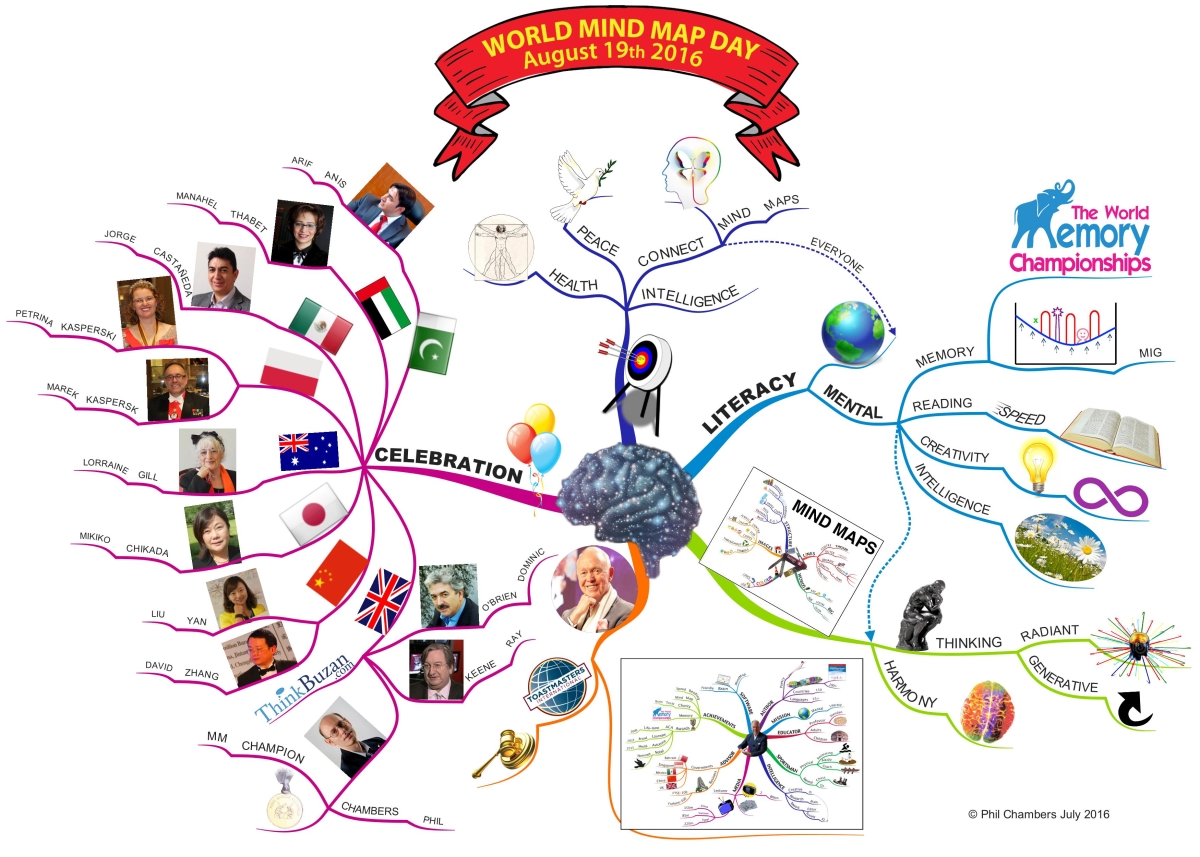


 Zoning out sucks, doesn’t it? You’re sitting there, wishing you can concentrate, wishing you knew how to improve focus … and yet … your mind is just dancing all over the darn place.
Zoning out sucks, doesn’t it? You’re sitting there, wishing you can concentrate, wishing you knew how to improve focus … and yet … your mind is just dancing all over the darn place.
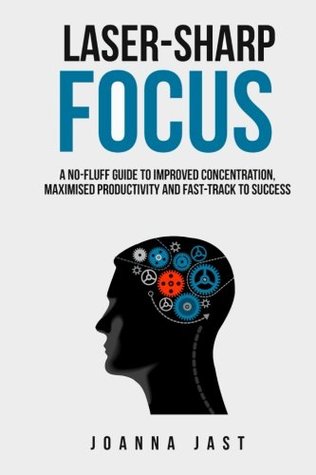
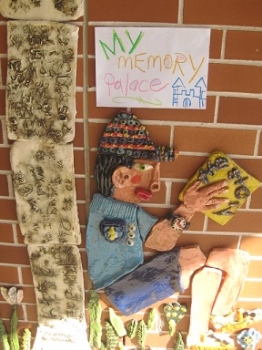 How I Memorized German Phrases
How I Memorized German Phrases  Because I knew I would need a large location to hold my expanding sentences, I chose a route that ran from the front door of my house, along the street, through a local park and over to my son’s local primary school – some 400 meters in total.
Because I knew I would need a large location to hold my expanding sentences, I chose a route that ran from the front door of my house, along the street, through a local park and over to my son’s local primary school – some 400 meters in total.
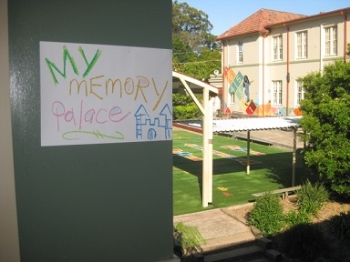 amous name and CASTLE is a single image I want to use represent the entire sentence. It’s a concrete image that is easy to visualize. (Is there anyone who can’t imagine a castle?)
amous name and CASTLE is a single image I want to use represent the entire sentence. It’s a concrete image that is easy to visualize. (Is there anyone who can’t imagine a castle?)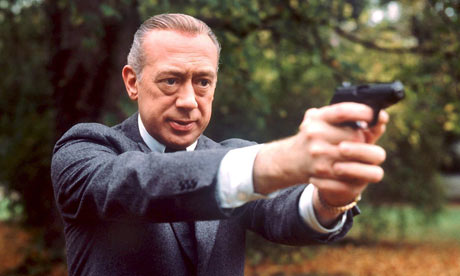 But if GoethE doesn’t make sense to your imagination and you encounter an issue Anthony talked about in his
But if GoethE doesn’t make sense to your imagination and you encounter an issue Anthony talked about in his 

 Have you ever gone through a phase that forced you into starting over from scratch?
Have you ever gone through a phase that forced you into starting over from scratch?
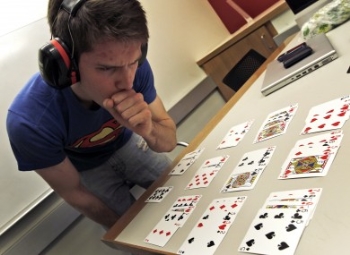 In this episode of the Magnetic Memory Method Podcast, USA Memory Champ Nelson Dellis teaches you how to win the USA Memory Championship.
In this episode of the Magnetic Memory Method Podcast, USA Memory Champ Nelson Dellis teaches you how to win the USA Memory Championship. How To Memorize Even The Most Difficult Words In The World Using World Class Memory Techniques
How To Memorize Even The Most Difficult Words In The World Using World Class Memory Techniques Dear Memorizers,
Dear Memorizers, I’ve been training myself to employ this notice board for capturing the key points of podcasts that I listen to every now and again.
I’ve been training myself to employ this notice board for capturing the key points of podcasts that I listen to every now and again.
